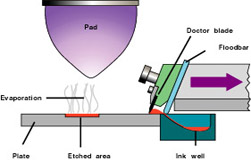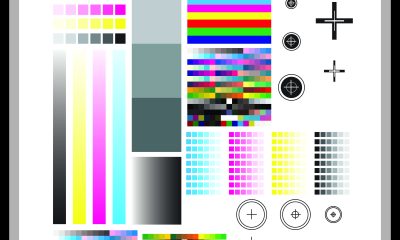I met two young designers recently who attended a weekend workshop here at Squeegeeville. Their back story totally blew my mind once I got my head around what they’re doing in their business and had a look at their website. They’ve developed a unique concept, one that seems to be working quite well and that has me wondering if I understand the business we’re in quite as well as I thought I did.
I met two young designers recently who attended a weekend workshop here at Squeegeeville. Their back story totally blew my mind once I got my head around what they’re doing in their business and had a look at their website. They’ve developed a unique concept, one that seems to be working quite well and that has me wondering if I understand the business we’re in quite as well as I thought I did.
It used to be that a printer would have a “typical” customer (hopefully, a lot of them). That customer would order a quantity of imprinted products for their own use, or sometimes for resale to others. The more they ordered (all at once), the better for everyone in the chain. Long runs and the sound of squeegees hissing back and forth over stencils meant money was flowing, and it still does. Printers needed customers who ordered lots of printing, or more customers, or both. This approach to business makes us service-based manufacturers, for want of a better description.
Many screen-printing companies still work off this model. In many cases, it requires a growing enterprise to expand the market for their wares out of their local geographic area, serving clients on a national or international level. This isn’t new, but having an online advertising presence and ordering capacity makes it easier today, in some cases. In others, it’s the kiss of death, because starting a business is way easier than growing it. One thing modern shops have to support out-of-region selling is fast, efficient, and economical shipping, especially in the US. (You Americans don’t know how good you have it down there.)
But we’ve seen a fundamental change in this model, both in textile and graphics printing, that has been driven as much as anything by advances in technology. Digital printing has reduced the economical run length to a very low number, even a single piece. The word “print” used to almost always mean multiples, and producing them meant having a lot of floor space and an array of production equipment to service any type of order. Digital printing has reduced the footprint of the machines, time, and skilled labor required. The needs of the typical customer have changed dramatically from the previous model.
So now printers can chase down, produce, and profit from small orders—which, in turn, has spawned new business models. Especially in the textile world, we’ve seen a number of web-based companies that print single shirts on demand using DTG printers. Customers can choose from stock images or upload their own designs. There’s nothing truly new here—it’s just a slicker and bigger version of the old mall kiosks that made T-shirts from transfers while you waited. Unfortunately, the web-based model only works if you have a large volume of individual customers.
Back to the designers I mentioned at the start of the column—Glen O’Neill, who lives on Vancouver Island on the left coast of “Canuckistan,” and his partner Mike Mancuso, who runs the T-shirt print shop they co-own near Chicago. What they have done is turn the single-order model on its head, and messed big time with the idea of “location.”
Advertisement
They call their business The Yetee, and here’s how it works: The designs they print are sourced from artists around the world. They offer a new design almost daily, but (and this is the unique twist) it is only available once. Designs are vetted by O’Neil and Mancuso, and then put up on their website (www.theyetee.com). Website visitors have a 24-48 hour window to order the new design before the deadline is up, with an Ebay-style countdown clock prominently featured to help create urgency.
The result? They receive a lot of single orders at once that add up to significant production runs, anywhere from a few hundred shirts into the thousands, depending on the popularity of the design. When they started the company, they contracted out most of the printing. Now they print and ship the orders from their new production facility, where Mancuso runs the show, using automatic and manual screen-printing presses.
The Yetee has more than 300,000 site visitors a month, plus nearly 60,000 followers on its Facebook page and still more on Twitter, Tumbler, and Instagram. The site is immensely popular amongst video gamers and others who appreciate the types of designs they select. They definitely know what their customers want. They pay their artists a decent royalty on every shirt, and the design copyright stays with the artist. They offer a good price on a quality product and the customers pay up front. Because of their “print-after-demand” model, the company carries minimal inventories except for some classic designs that are offered in the site’s “Yeteemart.”
By sticking to the “order now or it’s gone” mantra and developing a growing online base of worldwide fans who love the art, the owners of The Yetee have created a totally new business model. Definitely not the old silk-screen shop you and I remember.
Andy MacDougall is a screen-printing trainer and consultant based on Vancouver Island in British Columbia. He is the author of Screen Printing Today—The Basics and a member of the Academy of Screen & Digital Printing Technology. Learn more about his workshops and educational materials at www.squeegeeville.com, and address questions and comments to him at andy@squeegeeville.com.


 Case Studies2 months ago
Case Studies2 months ago
 Art, Ad, or Alchemy2 months ago
Art, Ad, or Alchemy2 months ago
 Andy MacDougall2 months ago
Andy MacDougall2 months ago
 Columns3 weeks ago
Columns3 weeks ago
 Editor's Note3 weeks ago
Editor's Note3 weeks ago
 Marshall Atkinson3 weeks ago
Marshall Atkinson3 weeks ago
 Thomas Trimingham2 months ago
Thomas Trimingham2 months ago
 Case Studies3 weeks ago
Case Studies3 weeks ago
















